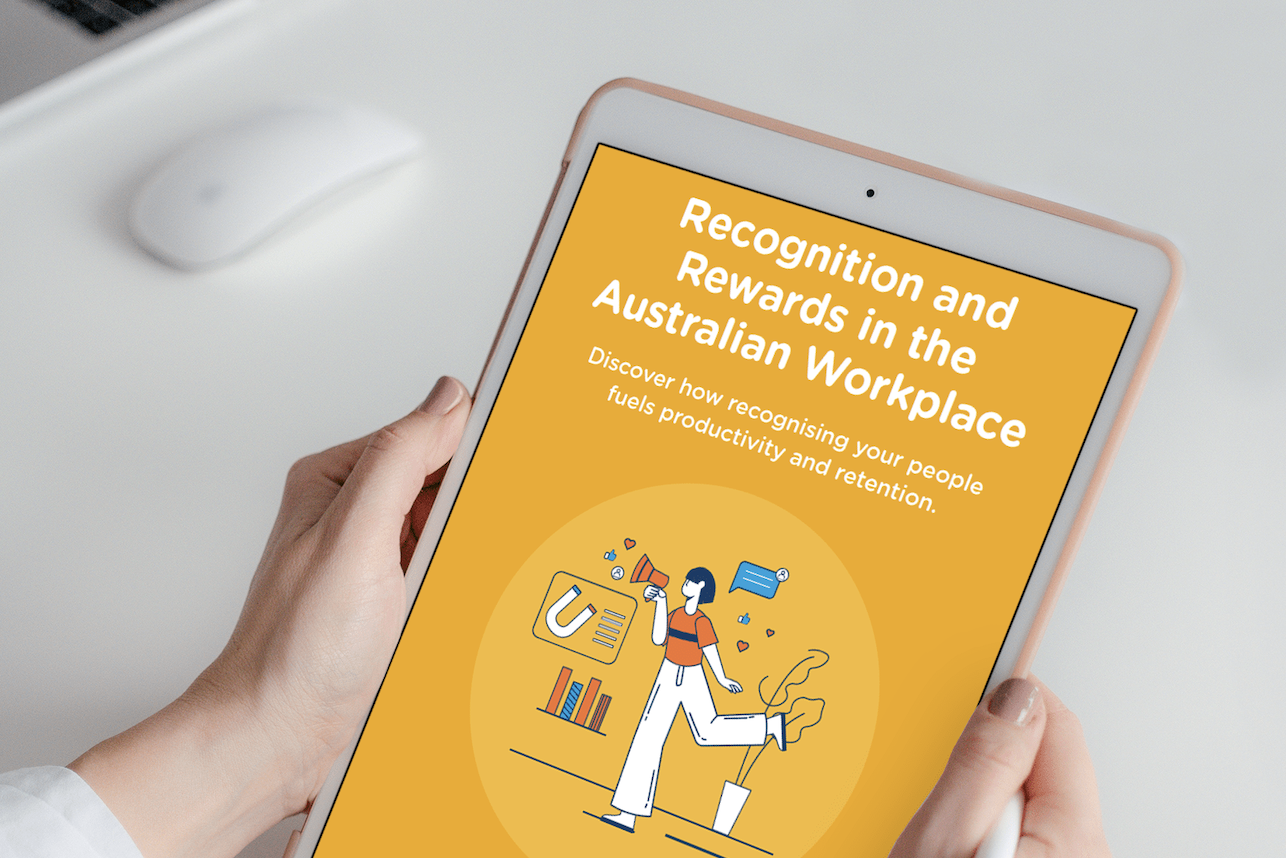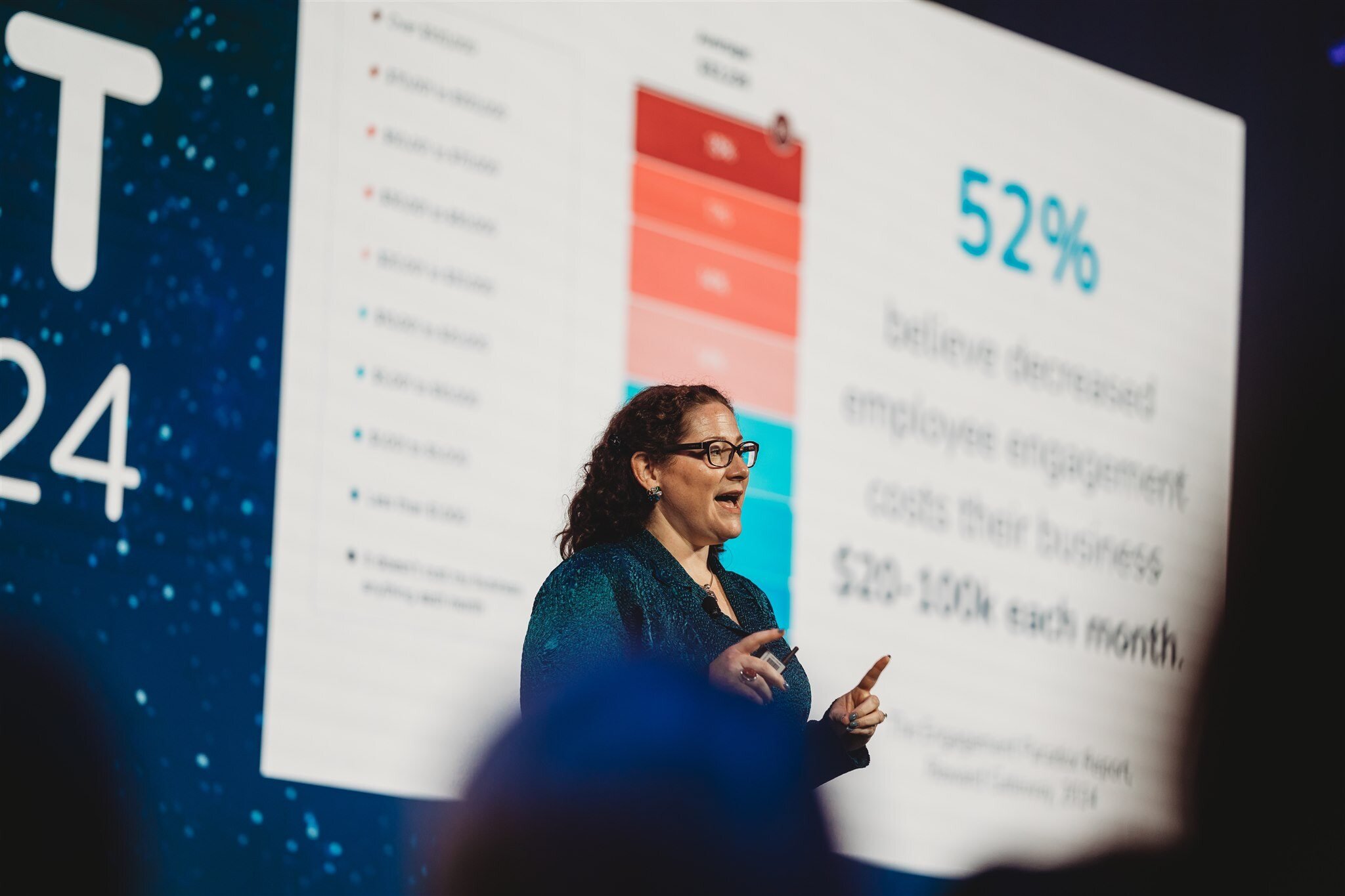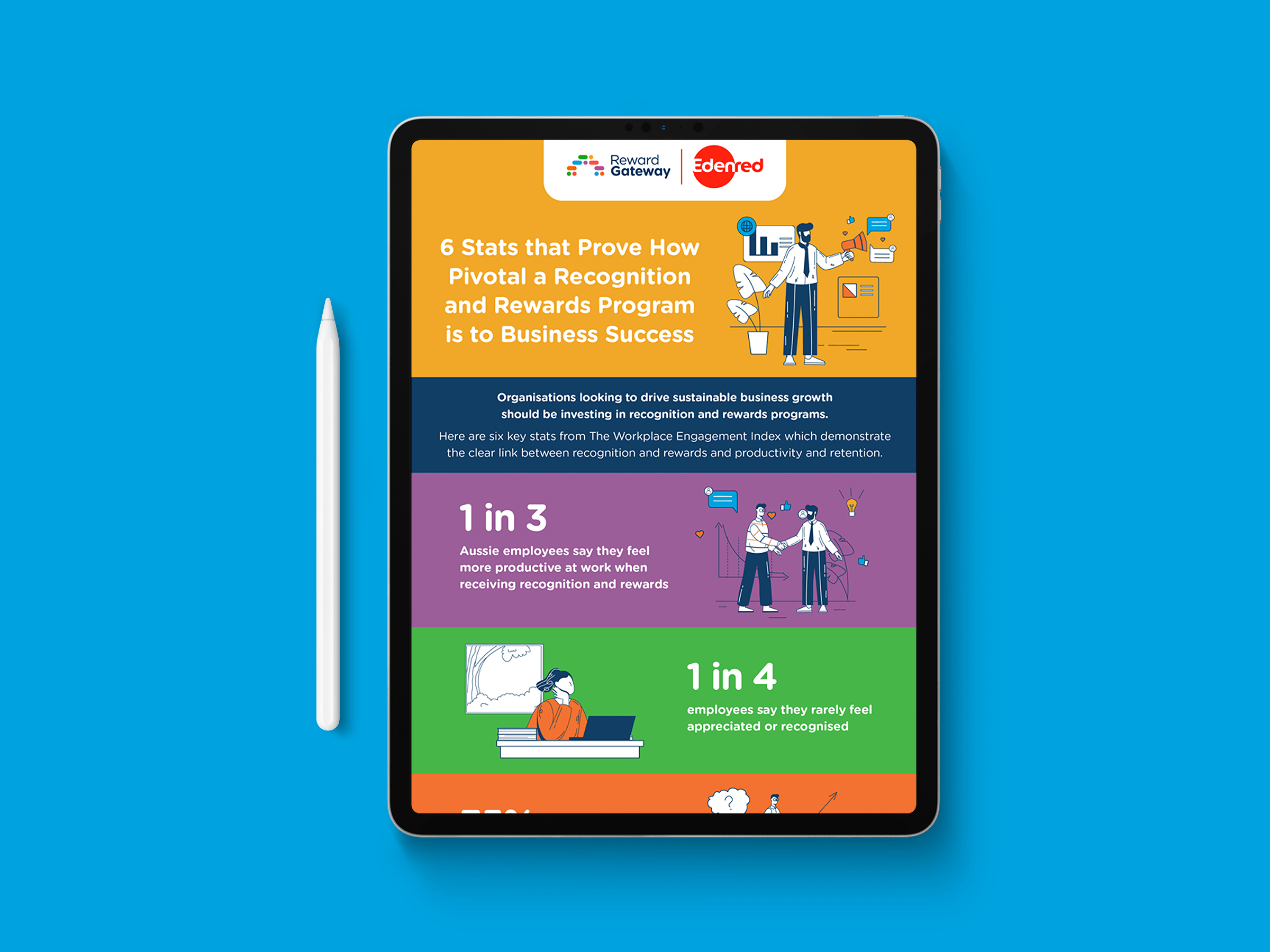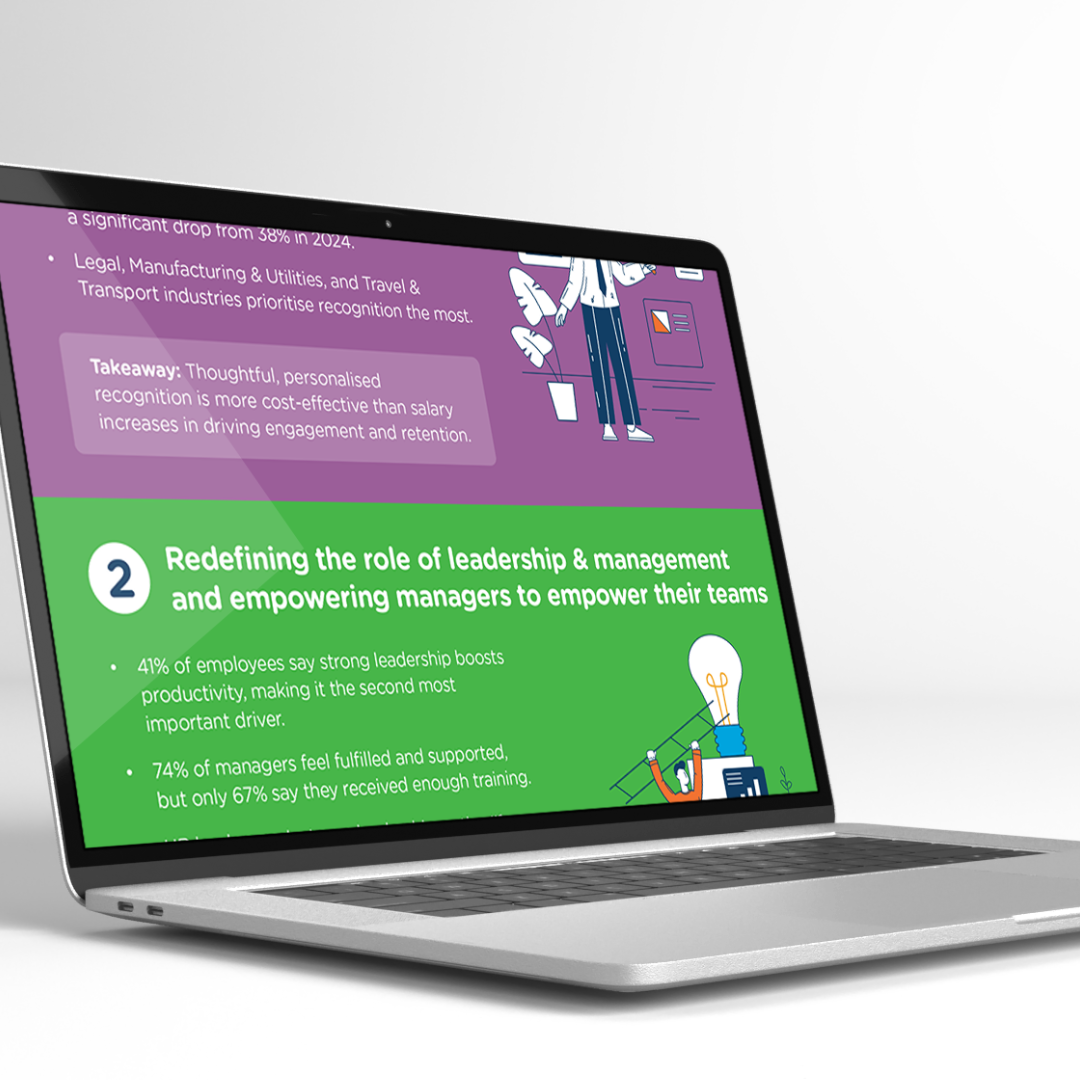So your people have onboarded, are working cohesively and appear to be enjoying the work that they do. Sounds good, but don’t get complacent. In this competitive market, all it takes is one attractive offer from a competitor and your people might start to think about leaving, in which case you’d not only lose a valued member of your team but would also have to go through the lengthy hiring process again and spend both time and money attracting and onboarding new talent.
Our 2024 research found that one in two employees have considered leaving their job recently, while one in three say they would consider staying with their current employer if they received more recognition.
With this in mind, we’ve broken down some of the best employee retention strategies which can best help you avoid this situation and foster an engaged and motivated workforce.
Understanding employee retention
What is employee turnover?
Employee turnover is the rate at which you lose staff over a certain period because they leave or retire. This doesn’t include staff who are fired or made redundant. It’s often calculated as a percentage over a certain time.
For example, if you had a team of ten people, and three of them left during the past year, your team’s annual employee turnover rate would be 30%. You want this number to be as low as possible, as a low employee turnover is often a key indicator that your staff are happy and content in their roles.
The importance of retaining your people
It seems obvious, but it’s worth reminding yourself of the headache you’ll encounter if one of your top employees leaves your organisation. Losing a key team member means your team’s general effectiveness will decrease, and if they go to another role in your industry their skills and experience will soon be utilised by your competitors.
Often your key team members are popular figures who act as champions and cheerleaders within your organisation. They have a huge influence on your culture and motivation levels.
What’s the financial and non-financial cost of employee turnover?
Replacing your former employees takes time, resources and money. Posting on job boards or using recruiters can set you back thousands of dollars, while even if you bring in a fantastic new team member it can take months of training and learning the company culture before they’re firing on all cylinders.
And don’t forget the impact on morale. Your other people will notice that a team member has left and inevitably wonder why. Maybe there aren’t good opportunities for progression here? Maybe another company would pay them more? These are all questions you’ll have to deal with.
So how do you improve employee retention? What are the secrets to retaining employees, even in a competitive job market? We’ve got some solid employee retention strategies for you below.
Onboarding is key
It might just seem like a pleasant way to get to know your new hire, but onboarding is much more than that, and can have a huge impact on improving employee retention.
By organising a comprehensive onboarding program, you can teach new team members about the job and company culture, ensuring they fit in quickly and gel well with their colleagues. It’s also a great chance to provide any training or support they might need, and gives you an opportunity to take them through any welcome packages or mentorship programs you might offer, meaning they instantly know how good your workplace is!
Look into employee benefits
Here’s your chance to really make a difference in the lives of your employees. By offering employee benefits your organisation can become more than simply a place for people to earn a salary. Speak to your employees to figure out what they need to make their lives easier and happier.
Of course, it’s important to be aware of and respond to everyone’s needs. Many organisations are finding employee benefits that offer discounts on everyday items are having a positive impact on staff morale during the cost of living crisis. Below are a few ways you can help support your employees’ financial wellbeing.
Set up an employee discounts scheme
An employee discounts scheme is one of the easiest ways to enhance your Employee Value Proposition. It shows you understand your employees' financial positions and are doing everything you can to help make their money go further.
It’s also worth considering the psychological effect of discount schemes in relation to retaining employees. An extra $50 a month into their pay packet might go unnoticed by some, but a discount for their favourite shop or a weekly saving on groceries is sure to make people happy.

Keep on top of recognition and rewards
It sounds simple, but many organisations miss out on this basic employee need. A recognition and reward program is the easiest way to reward good work and strong results. It’s how you foster an environment of success and improve employee retention.
The key thing here is making it a continuous process. Pay reviews may only come round once a year, but a successfully-delivered project needs immediate, meaningful recognition that's linked to both the achievement and the impact of that work.
Empowering your team and creating a positive work culture that rewards hard work is one of the most formidable employee retention strategies you can invest in.
Not sure where to start? Watch our free workshop on Building a World-Class Recognition and Reward Program to Strengthen Connection and Culture.
Prioritise employee wellbeing
Professional wellbeing is one of the best tools you have in your goal to improve employee retention. It’s not complicated to see why – high employee satisfaction leads to less turnover because content employees are more likely to stay put.
Make sure your team has access to wellbeing initiatives, be it through education, professional training or just the space and time to become better versions of themselves. Offering volunteering days is another great way to improve wellbeing while allowing your staff to give back to their communities.
Remember that wellbeing is about both the mind and body. Gym memberships are a great perk, but do you offer access to therapy services for your staff? Are your benefits and support options listed in an easily accessible place?

Finally, improve employee engagement
The different employee retention strategies and techniques we’ve mentioned here will work best if you are sure all your staff are engaging with them. Offering a free gym membership isn’t going to help you with employee retention if none of your staff are aware of it! So make sure you have a solid internal communications platform to communicate all your various perks and benefits with your team.
Be sure as well to encourage feedback from your employees. If they respond well to a benefit, see if you can expand it. If your staff aren’t fans of it, then don’t be afraid to cut it. Listen to your team and base your strategy around what works for them.
You can actually take this one step further and actively measure employee engagement with your various benefits. Were people clambering over themselves to sign up to your Cycle to Work scheme 12 months ago, but this year there hasn’t been much take up? Take note of the data and you’ll be able to see the changing tastes of your workforce.
The final benefit of increasing this kind of engagement is that you’ll build a stronger connection between your employees and the organisation. An engaged employee is the best employee, and if they know their feedback can impact the benefits they receive, a sense of ownership will start to grow, which in turn will help improve your employee retention rate.
Get in touch with one of our team today to discover how you can drive your retention goals by enhancing the employee experience across your organisation.
 Nebel Crowhurst
Nebel Crowhurst





